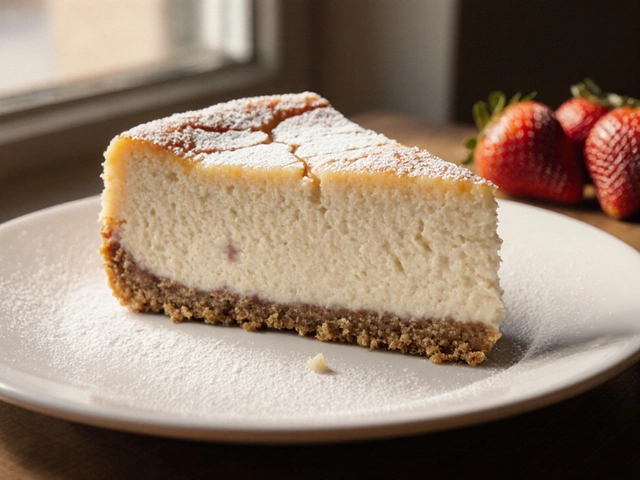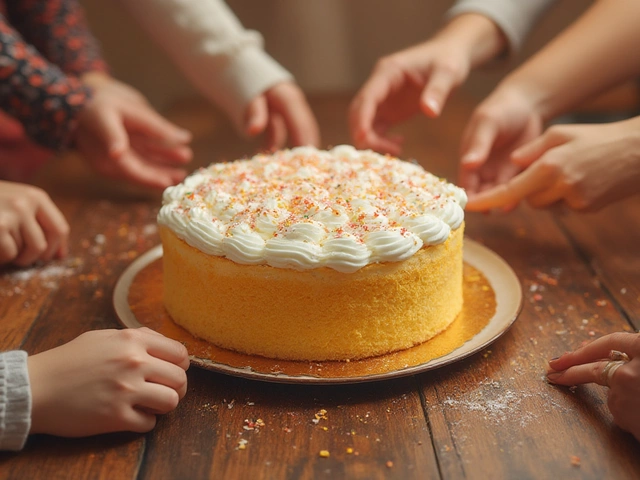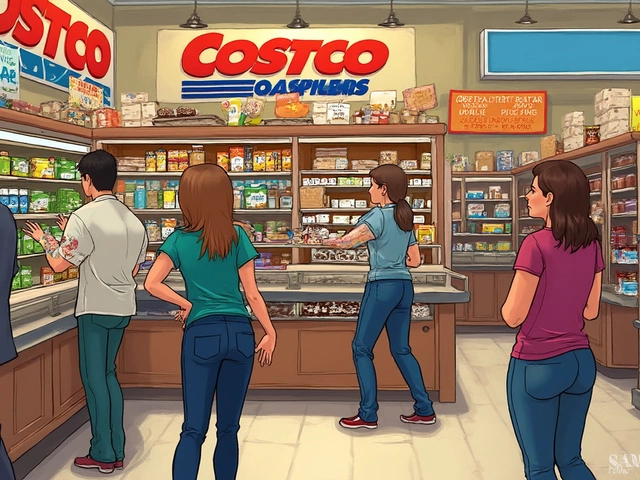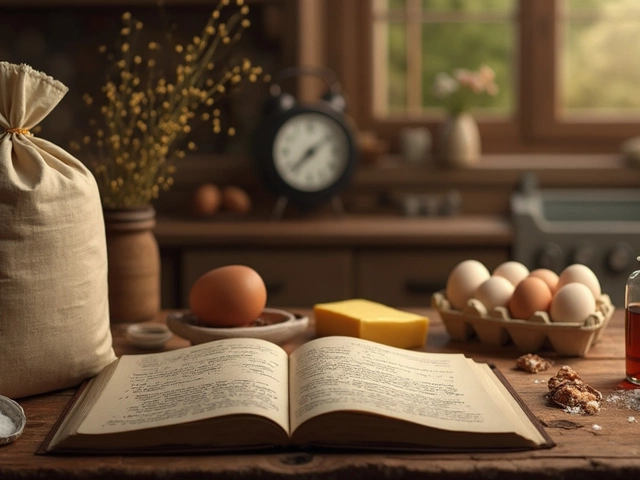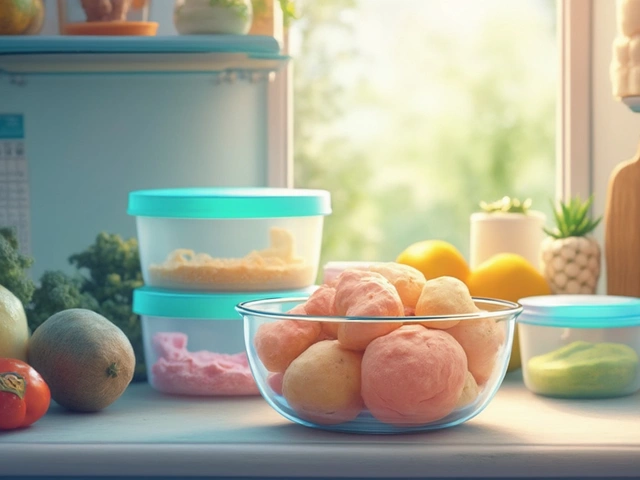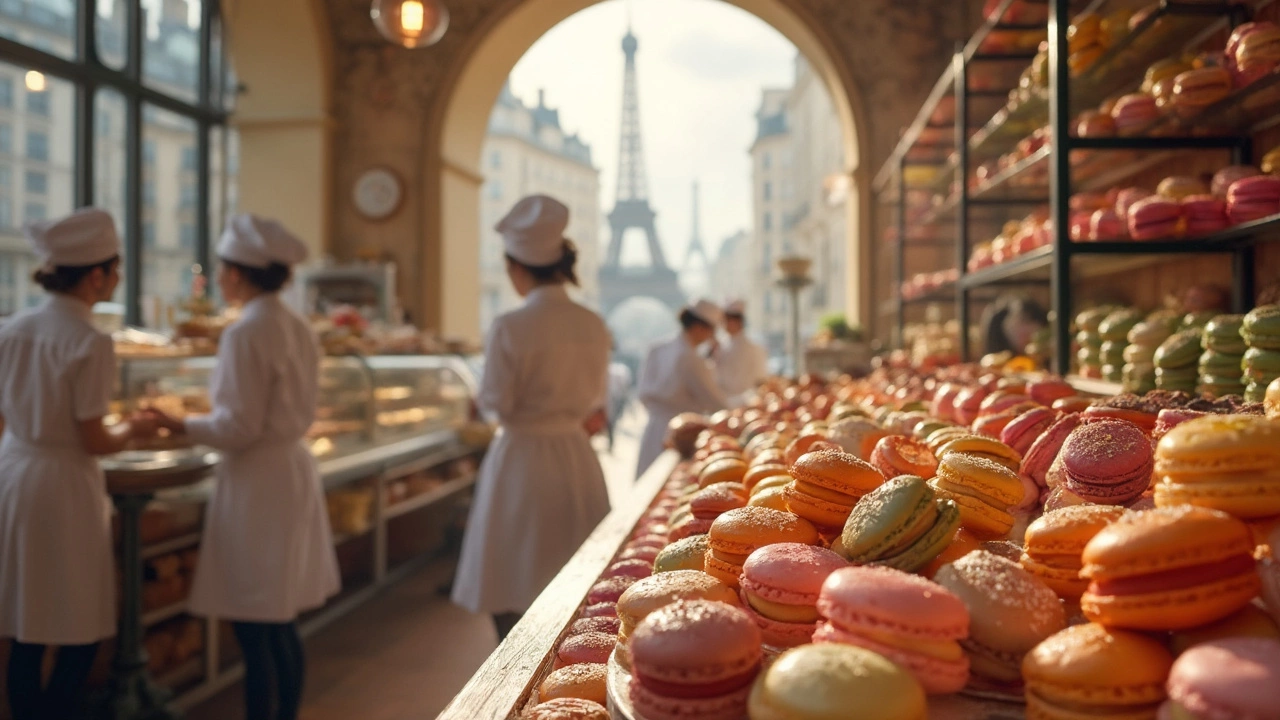
You can’t talk about Paris without talking about its food. But when people ask, “What should I eat in Paris?”—I always say: macarons, hands down. Sure, you might picture croissants or baguettes, but no treat screams Paris quite like those colorful, delicate little cookies.
If you think macarons are just sweet and pretty, you’re missing half the story. Each shop in Paris takes their spin seriously, playing with flavors, textures, and even the colors that make the city pop. Macarons aren’t just dessert—they’re a whole experience, from the crispy shell that gives way to a chewy middle, to the burst of flavor in every bite.
Navigating Paris can feel overwhelming, especially with so many pastry options on every corner. But macarons? These are the kind of treats you’ll want to eat in the moment and maybe sneak a box home in your suitcase. Even if you’ve tried macarons elsewhere, trust me—Paris does them differently, and you’ll taste the difference once you bite in.
- Why Macarons Rule in Paris
- A Bite of History
- Where to Find the Best Macarons
- How Locals Eat Macarons
- Flavors You Need to Try
- Pro Tips for Macaron Lovers
Why Macarons Rule in Paris
Paris isn’t short on desserts, but macarons have a cult following for good reason. They look fancy, but anyone who bites into one knows it’s not style over substance. Each macaron carries this perfect combination: a crisp shell, a soft middle, and a creamy filling. That balance is tough to get right, and Paris pastry chefs basically turn it into an art form.
Here’s the thing—those perfect little rounds you see lined up in Paris pastry shops take time to master. It’s not just mixing almond flour, sugar, and eggs. Classic Parisian macarons need exactly the right ingredients, a super strict process, and serious attention to humidity. Some bakeries actually have their own "macaron rooms" set at the perfect temp and humidity just for baking.
But there’s more to it than technique. A big part of the Paris macaron magic is the creativity. You’ll spot flavors you never imagined—rose, passionfruit, pistachio, even yuzu or salted caramel. Paris shops keep pushing the envelope, and every visit brings something new to try.
What really makes macarons stand out among French desserts? Let’s compare real quick:
| Dessert | Texture | Served at | Flavors |
|---|---|---|---|
| Macaron | Crispy tip, chewy inside | Cafés, patisseries, hotels | Fruit, chocolate, floral, unique |
| Croissant | Flaky, layered | Bakeries, cafés | Plain, almond, chocolate |
| Éclair | Creamy, soft | Patisseries | Coffee, chocolate, seasonal |
Travelers might think of croissants or eclairs first, but macarons are the souvenir people buy in bulk. You’ll see both locals and tourists snacking on them in parks, sharing them at birthdays, and bringing colorful boxes back home. These treats have become a symbol of Paris—a little bit classy, a lot addictive, and totally unique.
A Bite of History
Ever wonder how macarons became the star of the Paris food scene? These little treats have a way longer story than most people think. The first version actually showed up in Italy back in the 1500s, but they only became famous in France when Catherine de Medici brought her pastry chefs over after marrying Henry II. Back then, macarons were just plain almond cookies—none of the funky colors or flavors we see today.
The big change happened in the early 20th century. That’s when Pierre Desfontaines, working for Ladurée (yep, that Ladurée—the one with the long lines), had the idea to put two cookies together with a creamy filling in the middle. It worked. People loved it. And so the French desserts world got what we now call the Parisian macaron.
"There is no better ambassador for French pastry than the macaron," says Pierre Hermé, often called the Picasso of pastry.
Now, every bakery in Paris tries to outdo the others, testing new flavors and designs. The OGs like Ladurée and Pierre Hermé are still running the show, but smaller patisseries are bringing new twists to the table every year.
| Macaron Moment | Year |
|---|---|
| Macaron arrives in France | 1533 |
| Double-decker macaron created | 1930s |
| Pierre Hermé launches new flavor trends | 1998 |
So, if you thought the macaron was just an Instagrammable treat, guess again. Eating a real Paris macaron means you’re biting into a slice of food history.
Where to Find the Best Macarons
It’s no secret—Paris is packed with bakeries and pastry shops, but only a few spots are truly famous for macarons. If you want the top-tier experience, you’ve got to know where to look.
Let’s start with Ladurée. It’s the place most people think of when they picture classic Paris macarons. Their shop on Champs-Élysées often has a line out the door, and honestly, it’s worth it. They stick to tradition and their pastel boxes make perfect gifts. Prices run about €2.50 per macaron, but there’s no skimping on flavor.
Pierre Hermé, though, makes macarons that taste like tiny, edible works of art. He’s famous for mixing up flavors you wouldn’t expect—like olive oil and vanilla or passion fruit with chocolate. Foodies swear by his shop in the Saint-Germain area. Try a box of mixed flavors if you can’t decide.
Don’t skip lesser-known gems. Fauchon is a little flashier with their fillings and colors. Then there’s Carette, right near Trocadéro, with really crispy shells and creamy centers. Both are solid picks and a little less mobbed by tourists.
Want something different? Head to Maison Georges Larnicol. They make smaller, colorful macarons that feel light as air, and you can buy them by weight.
- Ladurée: Classic flavors, iconic boxes, top tourist pick.
- Pierre Hermé: Trendy flavors, best for a flavor adventure.
- Fauchon: Extra-colorful, rich fillings.
- Carette: Great view, slightly less crowded, super crispy.
- Maison Georges Larnicol: Mini macarons, buy in bulk!
If you’re worried about lines, avoid going on weekends or just before holidays—especially at the big names like Ladurée. Weekday afternoons are usually the quietest. Also, most big shops offer samplers, so you don’t have to commit to a full box of one flavor.
Check out this quick price and location comparison to plan your macaron hunt smarter:
| Shop | Each Macaron (~€) | Nearest Metro |
|---|---|---|
| Ladurée (Champs-Élysées) | 2.50 | George V |
| Pierre Hermé (Saint-Germain) | 2.20 | Mabillon |
| Fauchon | 2.10 | Madeleine |
| Carette (Trocadéro) | 2.40 | Trocadéro |
| Maison Georges Larnicol | by weight | Saint-Michel |
Don’t be shy about popping into any bakery that looks promising—Paris has surprises everywhere, and your new favorite French dessert might be hiding in a small, family-run shop off the main road.
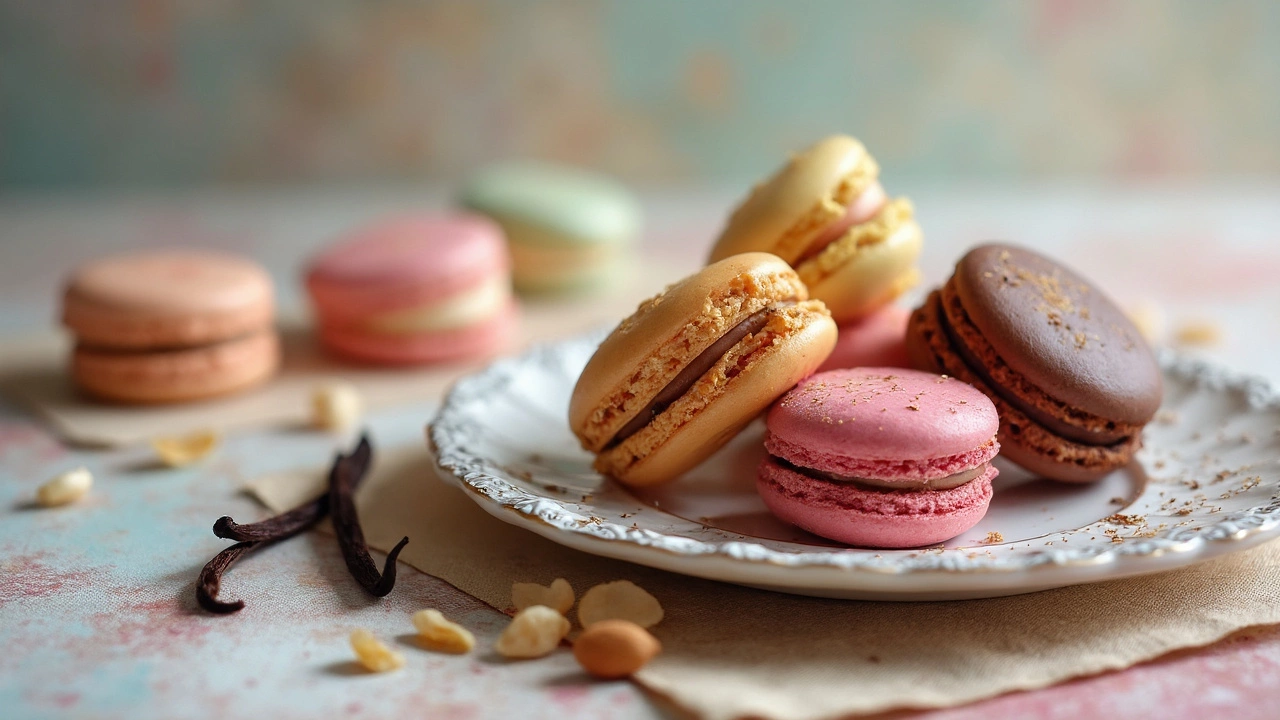
How Locals Eat Macarons
Back home, you might just pop a macaron in your mouth on the go. In Paris, locals make it a moment. People don’t scarf them down in the street with coffee. They’ll sit down, savor it, sometimes even snap one in half just to check the filling before eating. You can actually spot Parisians at popular spots like Pierre Hermé or Ladurée, enjoying a macaron slowly, usually paired with tea or espresso—not a giant coffee cup.
When it comes to storing them, locals know that macarons are best eaten fresh. Most shops will recommend eating within two days, or the texture just isn’t the same. If you see folks at the counter choosing carefully, that’s because they often buy just three or four at a time, not by the dozen. They like to pick seasonal flavors or something new, and they love chatting with staff about which ones are best that day.
Here’s what you’ll rarely see a Parisian do with their macarons:
- Refrigerate them at home (that ruins the texture)
- Eat them standing up outside the shop
- Choose only one flavor (mixing is half the fun)
Want to try macarons like a real Parisian? Take them to a park or café, lay them out, and taste one at a time. Locals often start with the lightest flavor (maybe vanilla or rose) and move on to richer ones (like pistachio or chocolate). It’s almost like a tasting menu—nobody rushes it. If you’re sharing with a friend, split the shells and compare what you think of each.
Fun detail: a 2023 survey by French foodie mag "Gourmand" found that most Parisians eat macarons at least once a month, and over 60% prefer having them with a hot drink. So next time you buy Paris macarons, find a cozy spot, don’t rush, and try a flavor combo you can’t get at home.
Flavors You Need to Try
Going to Paris and skipping out on the classic macarons is like going to the Eiffel Tower and not looking up. But once you step into any patisserie, you’ll see a rainbow of macaron flavors staring right back at you. Where do you even start?
The originals catch everyone’s attention first. Pistachio, raspberry (sometimes labeled as "framboise"), and chocolate are always safe bets. Ladurée, one of the most famous names for Paris sweets, claims to sell upwards of 15,000 macarons a day—and their salted caramel is the crowd favorite by a mile. Pierre Hermé is the clear winner if you’re into unusual stuff: try their passionfruit, rose, or their game-changing “Ispahan” flavor, which blends lychee, rose, and raspberry. Sounds odd, but somehow it works.
If you want to eat like a local, watch out for seasonal specials. You’ll spot chestnut cream in the winter, lemon or strawberry in spring, and even savory flavors like foie gras around the holidays in some shops. I know, foie gras sounds weird for a dessert, but hey, it’s Paris!
Here are the flavors you can’t leave Paris without trying:
- Pistachio – Nutty, creamy, and everyone’s favorite green cookie.
- Salted caramel – Sweet and salty; seriously addictive.
- Raspberry – Tart and juicy, with a punch of berry flavor.
- Lemon – Bright, zesty, and totally refreshing.
- Chocolate – Deep cocoa, rich, and not too sweet.
- Ispahan (Pierre Hermé) – A wild card you won’t regret.
Want to know what flavors run the show? Here’s a quick comparison of bestsellers at the top shops:
| Pâtisserie | Bestselling Macaron Flavor |
|---|---|
| Ladurée | Salted Caramel |
| Pierre Hermé | Ispahan |
| Dalloyau | Chocolate |
| Fauchon | Raspberry |
The cool part: these flavors aren’t just hype. Each bakery has its own recipe, which totally changes the balance between crispy shell and creamy filling. So, if you have time, try a few flavors at different spots. And don’t stress over the “right” pick—half the fun is taste-testing your way through Paris, one macaron at a time.
Pro Tips for Macaron Lovers
If you want to get the most out of eating macarons in Paris, a few smart moves can change everything. It’s not just about grabbing any box from the nearest shop. Start by visiting in the morning—bakeries usually stock the day’s freshest batches around 11 AM. You’ll notice the shells are crisper and the filling fluffier compared to later in the day.
Transporting your Paris macarons? They’re delicate. Ask for a sturdy box, and keep them flat. Avoid tossing them in a crowded backpack—they break really easily. Try to eat them within three days for the best texture and taste. Macarons contain almond flour and have no preservatives, so they’re not meant to last ages.
- Don’t chill them straight from the store. Let them warm up to room temperature; flavors pop more.
- If you’re taking them back home, stash them in your carry-on, not checked luggage.
- Want to look like a local? Eat them one at a time and savor each bite instead of popping them like candy.
- Pair your macarons with a simple black coffee or even a glass of champagne—Parisians swear by that combo.
- If you spot unusual flavors, like wasabi or passionfruit, go for it. Paris macaron makers love to push boundaries, and you’ll discover surprises in every shop.
Curious which flavors sell out first? Check out this quick roundup from a well-known bakery:
| Flavor | Average Sell-Out Time |
|---|---|
| Pistachio | Noon |
| Salted Caramel | 12:45 PM |
| Raspberry | 1:30 PM |
| Lemon | 2:00 PM |
And here’s a tip known by locals: at places like Pierre Hermé or Ladurée, ask if they have seasonal or hidden menu flavors. Sometimes, they’ll surprise regulars or curious visitors with flavors not listed out front. Your taste buds will thank you.

